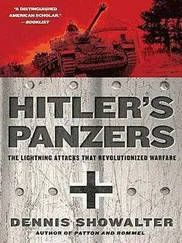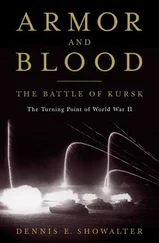6Cf. Germany, Reichsarchiv, Der Weltkrieg 1914 bis 1918, Vol. II (Berlin, 1925), 46ff.; and Hermann von François, Marneschlacht und Tannenberg (Berlin, 1920), 130–131.
7Reichsarchiv to Tappen, July 4, 1921, BA-MA, Nachlass Tappen, NL 56/ 2; Weltkrieg II, 45.
8Quoted in “Besass Deutschland 1914 einen Kriegsplan?” Ludwig Beck, Studien, ed. H. Speidel (Stuttgart, 1955), 102.
9Norman Stone, “Austria-Hungary,” in Knowing One’s Enemies. Intelligence Assessment Before the Two World Wars, ed. E. R. May (Princeton, 1984), 49–50. Robert Asprey, The Panther’s Feast (New York, 1959), is a sultry popular narrative of the Redi affair with a reasonable archival basis.
10Interwar descriptions of Austria’s plan include Rudolf Kiszling, “Feldmarschall Konrads Kriegsplan gegen Russland,” Militärwissenschaftliche und technische Mitteilungen (1925), 469–475; Max Freiherr von Petreich, 1914: Die militärischen Probleme unseres Kriegsbeginnes (Vienna, 1934); and Josef Metzger, “Der Krieg 1914 gegen Russland,” in Der Grosse Krieg, ed. M. Schwarte, Vol. V (Leipzig, 1922), 22–53. Graydon A. Tunstall, “The Schlieffen Plan: The Diplomacy and Military Strategy of the Central Powers in the East, 1905–1914” (Ph.D. Dissertation, Rutgers University, 1974), 353 passim, is a detailed modern analysis. Cf. also Georg von Waldersee, “Uber die Beziehungen des deutschen zum österreichische-ungarischen Generalstab von dem Weltkrieg,” Berliner Monatshefte VIII (1930), 103–142.
11“Aufmarschanweisung 1914/15 für Oberkommando der 8. Armee,” Elze, Tannenberg, 185–196. The destruction of German military archives for this period during World War II is partly compensated for by Elze’s work, which includes a large number of the relevant documents.
12Hoffmann, War of Lost Opportunities, 21.
13“Allgemeinen Direktiven für die kommandierenden Herrn Genérale,” Aug. 6, 1914, Elze, Tannenberg, 201–202.
14This description of the East Prussian terrain is based on Edmund Ironside, Tannenberg (Edinburgh, 1925), 12 ff.; and the Cook’s-tourist account in BA-MA, Nachlass Below, NL 87/45, 571 ff. For the nature of the road and railway network see Frank B. Tipton, Regional Variations in the Economic Development of Germany During the Nineteenth Century (Middletown, Conn., 1976), 113.
15Fritz Gempp, “Geheimer Nachrichtendienst und Spionageabwehr des Heeres,” National Archives T-77 (rolls 1,438–1,440, 1,442, 1,507, 1,509), Part II, Section 2, 15 ff.
16David R. Jones, “The Advanced Guard and Mobility in Russian Military Thought and Practice,” SAFRA Papers, No. 1 ( Soviet Armed Forces Review Annual ) (Gulf Breeze, Fla., 1985), 57–59.
17Hoover Institution Archives, Adam Pavlovich Bennigsen, Papers 1914–1919, diary entries, July 27 [Aug. 9] and July 31 [Aug. 13], 1914; Jean Savant, L’Épopée russe (Paris, 1945), 152 ff., 197 ff.; and Basil Gourko’s more favorable War and Revolution in Russia, 1914–1917 (New York, 1919), 12–13. Gourko commanded the 1st Cavalry Division of Rennenkampf’s army.
18The standard work on uniform and equipment is Richard Knötel, Herbert Knötel, and Herbert Sieg, Uniforms of the World, tr. R. G. Ball (New York, 1980), 129 passim.
19Buchholz, “Die Coca und ihre Anwendung bei Mängel an Nährungsmitteln für die Verpflegung der Truppen im Felde,” Jahrbücher für die deutsche Armee und Marine II (1872), 211–216; Dr. Vogeler, “Bemerkungen zur Cocafrage,” ibid., Ill (1872), 260–265.
20The anecdote of the doctor is from Walter Richter, Das Danziger Infanterie-Regiment Nr. 128, Vol. I (Zeulenroda, 1930), 8.
21Gempp, “Nachrichtendienst” II, 3 passim; and II, 115 ff.
22M. von Poseck, Die deutsche Kavallerie 1914 in Belgien und Frankreich (Berlin, 1924), passim.
23For German cavalry operations in this sector see particularly Osterroht and Hermann, Dragoner-Regiment Prinz Albrecht von Preussen (Litthauisches) Nr. 1, 1917–1919 (Berlin, 1930), 40 ff.; the anecdote of the wounded Cossack is in Alexis Wrangel, The End of Chivalry. The Last Great Cavalry Battles 1914–1918 (New York, 1982), 13 ff.
24BA-MA, Nachlass Below, N87/45, 577; John H. Morrow, Jr., Building German Air Power 1909–1914 (Knoxville, Tenn., 1976), 48 ff.
25Germany, Kriegswissenschaftliche Abteilungen der Luftwaffe, Kriegsges-chichtliche Einzelschriften der Luftwaffe, Vol. Ill, Mobilmachung, Aufmarsch und erster Einsatz der deutschen Luftstreitkräfte im August 1914 (Berlin, 1939), 85–86 (hereafter cited as Luftstreitkräfte).
26Waldersee to Moltke, Aug. 18, 1914, Elze, Tannenberg, 202–204.
27 Luftstreitkräfte, 87.
28Colmar Freiherr von der Goltz, Denkwürdigkeiten, ed. F. Freiherr von der Goltz, W. Foerster (Berlin, 1929), 305–306.
29Hoffmann, War Diaries I, 37; and the letter to his wife of 13.8.14 in BA-MA, Nachlass Hoffmann, N 37.
30Cf. BA-MA, Nachlass Below, N 87/45, 687, 700–701; William to François, Feb. 17, 1914, BA-MA, Nachlass François, N 274/16.
31Tappen to Reichsarchiv, Jan. 5, 1929, BA-MA, Nachlass Tappen, N 56/16.
32Hoffmann, War of Lost Opportunities, 24–25; Weltkrieg, II, 56–57.
33Norman Stone, “Die mobilmachung der österreichisch-ungarischen Armee 1914,” Militärgeschichtliche Mitteilung (1974), 67–95, both establishes Conrad’s fixation on Serbia and his ultimate indecisiveness, and forms the basis for Stone’s numerous subsequent evaluations of Austrian strategy. Emil Ratzenhofer, “Österreich-Ungarns Mobilisierung, Transport und Versammlung Sommer 1914,” Hoover Institution Archives, Ratzenhofer Deposit, demonstrates that strategic decisions rather than technical considerations ultimately determined troop movements in 1914. Conrad’s justifications and the correspondence supporting them are in Aus meiner Dienstzeit 5 vols. (Vienna, 1921–25), IV, 161 passim. Cf. Helmuth von Moltke, Erinnerungen. Briefe. Dokumente 1877–1916 (Stuttgart, 1922), 19–20.
34Waldersee to Freytag (liaison officer at Austrian GHQ), Aug. 11, 1914; Conrad to 8th Army HQ, 14.8.14, and to Prittwitz, 15.8.14, in Elze, Tannenberg, 205, 265, 266–267; cf. Conrad, Aus meiner Dienstzeit IV, 388 ff.; and Theobald von Schäfer, “Deutsche Offensive aus Ostpreussen über den Narew auf Siedlice,” Militärwissenschaftliche und technische Mitteilungen (1930), 961–976.
35 Luftstreitkräfte, 88–89.
360ne critique of this kind, delivered in 1910 by then-Lt.-Gen. Paul von Hindenburg, made such an impression on a young subaltern that he repeated it word for word in his memoirs over seventy years later. Erich Hampe,… ais Alies inScherbenfiel (Osnabruück, 1980), 10–11.
37François, Marneschlacht und Tannenberg, 174–175.
38As in Franz von Gottberg, Das Grenadier-Regiment Kronprinz (1. Ostpreussischen) Nr. 1 im Weltkriege (Berlin, 1927), 19 ff.; Alfred Dieterich, Geschichte des Grenadierregiments König Friedrich der Grosse (3. Ostpreussischen) Nr. 4 (Berlin, 1928), 651.
39Lerchenfeld to Herding, Oct. 9, 1914, in Ernst Deuerlein, ed., Briefwech-sel Hertling-Lerchenfeld 1912–1917, Vol. I (Boppard, 1973), 341–342; Immanuel Geiss, Das deutsche Reich und der Ersten Weltkrieg (Munich, 1978), 62 ff.
40Hoover Institution, Bennigsen Diaries, July 29 (Aug. 11), Aug. 3 (Aug. 16), Aug. 10 (Aug. 17), Aug. 10 (Aug. 23); Gourko, War and Revolution, 42 ff.; Graf, “Military Government,” 123. John Bushnell, “Peasants in Uniform: The Tsarist Army as a Peasant Society,” Journal of Social History XIII (1980), 565–576; makes the case that that army’s real internal structure was a network of artels, which the average junior leader had neither the will nor the competence to dominate. This in turn suggests the structural pattern of command by consensus described above. On the general issue of requisitions see Martin van Creveld, Supplying War (Cambridge, 1977), 190 passim.
Читать дальше












